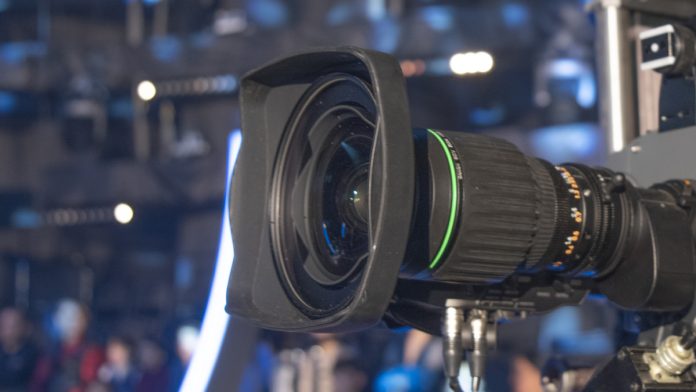Robotic camera rigs have transformed modern filmmaking, enabling directors and cinematographers to execute highly precise, repeatable, and dynamic shots that were once impossible. Behind the graceful movements you see on screen lies a complex interplay of kinematics, control systems, sensor fusion, and ruggedized hardware. In this article, we will explore the core engineering principles that make advanced robotic camera rigs so powerful, reliable, and future-proof in today’s cinema industry.
| Table of Contents | |
|---|---|
| I. | Multi-Axis Kinematic Modeling: Forward & Inverse Solutions |
| II. | Precision Actuator Selection and Thermal Management |
| III. | Real-Time Control Architectures: PID, MPC and Beyond |
| IV. | Trajectory Optimization for Smooth, Collision-Free Motion |
| V. | High-Bandwidth Sensor Fusion: IMU, LiDAR & Optical Tracking |
| VI. | Structural Dynamics Analysis & Active Vibration Damping |
| VII. | Edge-AI Inference Platforms: FPGA vs. GPU Trade-Offs |
| VIII. | Deterministic Networking: Time-Sensitive Ethernet Protocols |
| IX. | Automated Calibration and Self-Tuning Mechanisms |
| X. | Safety Integrity Levels (SIL) and Redundancy Strategies |
| XI. | Seamless Virtual Production Integration (Unreal/Unity Sync) |
| XII. | Predictive Maintenance: IoT-Enabled Health Monitoring |
| XIII. | Modular Payload Interfaces & Quick-Change Tooling |
| XIV. | Environmental Hardening: Weatherproofing & Portability |
| XV. | Scalability Roadmap: Future-Proofing Through Upgrades |
Multi-Axis Kinematic Modeling: Forward & Inverse Solutions
At the heart of every robotic rig lies its kinematic model, a mathematical description of how joint motions translate into end-effector (camera) movements. Forward kinematics uses known joint angles to compute the camera’s position and orientation in space, essential for simulation and visualization. Inverse kinematics, by contrast, calculates the joint angles required to place the camera at a desired pose. Solving inverse problems often involves iterative numerical methods (e.g., Newton-Raphson) or closed-form solutions for simpler rigs. Accurate kinematic modeling ensures smooth paths and precise framing, especially important when coordinating multiple axes of motion simultaneously.
Precision Actuator Selection and Thermal Management
Choosing the right actuators, whether brushless DC motors, direct-drive torque motors, or harmonic gear systems, determines a rig’s speed, torque, and positional accuracy. High-torque, low-backlash gearheads deliver repeatable positioning, while direct-drive motors excel at ultra-smooth motion. However, powerful actuators generate heat under sustained loads. Effective thermal management (heat sinks, forced-air or liquid cooling) prevents thermal drift, which can degrade accuracy. Engineers use thermal sensors embedded in motor windings and control electronics to actively monitor temperature and adjust duty cycles, preserving performance over long shooting schedules.
Real-Time Control Architectures: PID, MPC and Beyond
Real-time motion control ensures the camera follows planned trajectories with minimal error. The classic PID controller (Proportional-Integral-Derivative) remains ubiquitous for its simplicity and robustness. More advanced rigs leverage Model Predictive Control (MPC), which optimizes control moves over a finite horizon using a mathematical model of the rig’s dynamics. MPC can handle constraints explicitly, avoiding joint limits or collision zones, at the cost of higher computational load. Hybrid architectures often combine a fast inner-loop PID for immediate correction with an outer MPC layer for trajectory planning and constraint management.
Trajectory Optimization for Smooth, Collision-Free Motion
Generating cinematic camera paths is not just about going from A to B, it is about creating smooth, visually pleasing motion while avoiding obstacles. Trajectory optimization algorithms (e.g., Bézier curves, minimum-jerk splines) minimize sudden accelerations and jerks that can distract viewers. Collision-avoidance is baked into the optimization by modeling set geometry and using path-planning techniques such as Rapidly-Exploring Random Trees (RRT) or A*. The result: fluid camera moves that weave through tight spaces without risk of striking crew or equipment.
High-Bandwidth Sensor Fusion: IMU, LiDAR & Optical Tracking
To know exactly where the camera is, rigs integrate multiple sensors:
- IMUs (Inertial Measurement Units) provide high-frequency acceleration and rotation data.
- LiDAR scanners map distances to nearby objects for collision avoidance.
- Optical tracking systems (infrared markers or computer-vision markers) deliver precise external positioning.
Fusing these inputs via algorithms like the Extended Kalman Filter (EKF) yields robust, drift-free pose estimates even in dynamic, unstructured environments, critical for on-set reliability.
Structural Dynamics Analysis & Active Vibration Damping
Rigid structures can still vibrate under high accelerations. Engineers perform finite element analysis (FEA) to identify natural frequencies and mode shapes of booms and arms. To suppress unwanted oscillations, rigs incorporate active damping: sensors detect vibration and feed real-time signals to actuators that generate counter-forces, similar to noise-canceling headphones. The result is a stable image, even during rapid start-stop moves or on rugged camera cars.
Edge-AI Inference Platforms: FPGA vs. GPU Trade-Offs
Modern rigs increasingly run computer-vision and ML models onboard to detect obstacles, track targets, or adapt moves. FPGAs (Field-Programmable Gate Arrays) offer deterministic latency and low power but require specialized HDL development. GPUs excel at parallel workloads like deep-learning inference and are easier to program (CUDA/OpenCL), yet consume more power and introduce variable latency. The choice depends on the rig’s size, power budget, and real-time requirements.
Deterministic Networking: Time-Sensitive Ethernet Protocols
Coordinating sensors, controllers, and actuators calls for reliable, low-latency communication. Time-Sensitive Networking (TSN) extensions to standard Ethernet guarantee bounded delivery times by scheduling traffic and reserving bandwidth. This deterministic layer prevents jitter in control loops and ensures synchronized multi-device operation, essential when firing a camera at exactly the right moment or blending motion cues across rigs.
Automated Calibration and Self-Tuning Mechanisms
Before a shoot, every axis must be calibrated so the software knows exact joint zero points and gear ratios. Advanced rigs include self-calibration routines: the system moves through predefined patterns, measures errors via encoders or vision systems, and computes correction tables. Auto-tuning algorithms then adjust controller gains on the fly, adapting to payload changes (e.g., swapping a heavy lens) without manual intervention, saving valuable setup time on set.
Safety Integrity Levels (SIL) and Redundancy Strategies
On-set safety is paramount. Robotic rigs often adhere to international Safety Integrity Levels (SIL), which define the required risk reduction. Redundant sensors (dual encoders) and redundant controllers ensure that a single failure won’t send the arm careening into crew or talent. Hardware interlocks and emergency-stop circuits sit outside the primary control chain, providing fail-safe shutdown under any fault condition.
Seamless Virtual Production Integration (Unreal/Unity Sync)
With the rise of LED-volume stages and real-time CG, camera rigs must feed their live pose data into game engines like Unreal or Unity. Protocols such as DMX over Ethernet or NDI carry 6-DOF tracking data at high frame rates. Tight integration lets virtual backgrounds and real camera moves remain perfectly in sync, enabling directors to “see” final composites in camera and adjust rigs accordingly.
Predictive Maintenance: IoT-Enabled Health Monitoring
Downtime during a shoot can be crippling. By embedding IoT sensors on motors, bearings, and power electronics, rigs can stream temperature, vibration, and current-draw data to cloud analytics. Machine-learning models detect early signs of wear (bearing degradation, lubrication loss) and flag maintenance needs before failures occur, ensuring high uptime and avoiding expensive on-site repairs.
Modular Payload Interfaces & Quick-Change Tooling
Different productions demand different cameras, lenses, or accessories. Modular mounting plates with standardized electrical and data connectors let crews swap camera heads in minutes. Quick-release mechanisms (magnetic or mechanical latches) maintain precise alignment without lengthy re-calibration, streamlining transitions between shooting scenarios.
Environmental Hardening: Weatherproofing & Portability
Outdoor shoots expose rigs to dust, moisture, and temperature extremes. Sealed enclosures with IP65-rated connectors protect electronics; corrosion-resistant alloys and special coatings guard mechanical parts. For remote locations, rigs pack into rugged flight-cases with integrated power and network distribution, making them quick to deploy and resilient against the elements.
Scalability Roadmap: Future-Proofing Through Upgrades
A truly advanced rig is designed to evolve. Open-architecture control systems, modular electronics bays, and field-upgradeable firmware allow new sensors, higher-performance actuators, or upgraded AI modules to be added without replacing the entire platform. By planning for growth, engineers ensure the rig remains cutting-edge for years and hundreds of productions to come.

